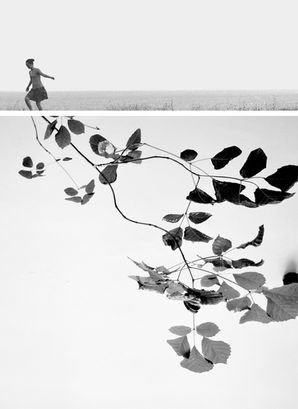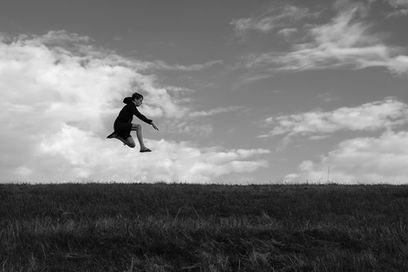
LIFE LESSONS
April 19, 2020
INTERVIEW
PHOTOGRAPHY Hugh Rawson
INTERVIEW Melanie Meggs
Hugh Rawson has been a street photographer for years, a passion that has taken him on an unforgettable journey full of unique and captivating moments. Hugh has explored the streets of London and the south-east of England, unapologetically capturing humanity and its beauty through his lens. But what is the secret to his success? Rawson believes that his experience as a primary school headteacher gives him the tools to understand and anticipate human behaviour, allowing him to capture images that may otherwise have been missed. Yet, Rawson never knows what he is going to capture, and it is this thrill of the unknown that keeps him going. So come with us as we explore the life and work of Hugh Rawson – street photographer and primary school headteacher – to learn why street photography provides equilibrium in his busy and demanding life.

“Initially I was just snapping away at things that caught my eye with my iPhone and Hipstamatic - although I did have a brief flirtation with film back in the eighties. I then moved onto a Fuji bridge camera but I didn’t know what I wanted to shoot so I just shot anything and everything. For the last four years the focus has been very much on the street and still with Fuji's.”
IN CONVERSATION WITH HUGH RAWSON
THE PICTORIAL LIST: Hugh, where do you find your inspiration?
HUGH RAWSON: I think the joy of street photography is that inspiration is all around you. However, I also think that it takes some knowledge in order too, to know where to look, and what to look at. The work of other photographers, especially the greats, is always an eye opener. I love time spent with a pile of photo books.
TPL: Has your style of photography changed since you first started?
HR: I suppose that I have moved away from catching almost random moments on the street to be better at catching specific moments which may be driven by an anticipated movement or by the light in a scene.
TPL: Do you have a favourite place(s) to go photograph?
HR: The place I keep returning to is Soho, London. It’s a happy hunting ground for me with so much going on and it’s ever changing. The South Bank and the City also have their appeal. I love shooting in France, Paris and the south are wonderful. I’m a big fan of shooting in and around cafes and bars and French culture does that so well.
TPL: What is your favourite quote that resonates with you the most?
HR: Wow - good question. So many to choose from so I’ll have two.
“I put my brain under my pillow when I shoot. I shoot with my heart and my stomach.” - Anders Petersen.
And then one from Miles Davis which is about music but can equally be applied to putting in the hours in any art form.
“Sometimes you have to play a long time to be able to play like yourself."
TPL: Do you have any favourite artists or photographers you would like to share with us, and the reason for their significance?
HR: Sergio Larrain, Fred Herzog, Ernst Haas, Saul Leiter, Alex Webb and, of course, Henri Cartier-Bresson - but that list can change at any moment. I like the abstraction and geometry of photographers like Fan Ho, but also the surrealism of Cartier-Bresson and the humanity of Sergio Larrain. I love the layers in Alex Webb’s work and the use of colour in Herzog, Leiter and Haas.
Most of the time it's like fishing in a polluted stream and all I catch is rubbish...every so often I catch a gem.

TPL: Do you think equipment is important in achieving your vision in your photography? What would you say to someone just starting out?
HR: To an extent. There comes a point where you actually have to get out and shoot, rather than spend time watching reviews of gear. Any modern camera is good enough to shoot street photos. The kit available to the ordinary person today is far better than anything that Cartier-Bresson or any of the legends had yet they were able to catch incredible moments. However, most people shooting street will want to be discreet and disappear into the shadows or the crowd - not in a creepy way but so that they don’t impact upon the scene they are capturing. This means that generally they will want a small camera and lens set up. There are exceptions of course and rules are there to bend, but I’d struggle with a giant DSLR and a 400mm lens in Soho. I often shoot from the hip so a 23mm (35mm equivalent) lens is perfect for most of what I do.
TPL: What characteristics do you think you need to become a photographer? What’s your tips or advice for someone in your genre?
HR: It varies hugely depending on what you want to shoot. I don’t have the patience to stand for two hours in a cold field for one image of a sunset so landscape is never going to be my thing. For street photography you have to like people, be able to empathise and, perhaps most importantly, be able to anticipate what is going to happen - be it a turn of the head followed by a kiss, or an exhalation of smoke.
My advice would be get some comfortable shoes because you are going to rack up the miles; learn from the greats; go with the light; and study the people.
TPL: Have you ever been involved in the art world before photography?
HR: In the 1980’s I was in a band called SLAB! You can find a few tracks like “Mars on Ice” and Parallax Avenue” on You Tube. I also wrote a few stories for children and had an agent for my writing though never actually succeeded in getting anything published. It’s so important as a human being to have a creative outlet. It’s what sets us above the beasts. It keeps me on the right track.
TPL: Are there any special projects you are currently working on that you would like to let everyone know about?
HR: I wish I could say there was. I’m not really a project person and in some crazy way I feel that that makes me less of a photographer. I don’t go out looking or anything specific. I just like to explore an area and see what I can catch...
TPL: "If I wasn't photographing what would I be doing?...
HR: Music; writing; or just out on my bike."

Hugh's passion for street photography is what makes him a great photographer. His ability to empathise, anticipate and never knowing what he is going to capture makes his work stand out. If you would like to follow Hugh and his creative journey, follow the links below and be part of his inspiring story.































